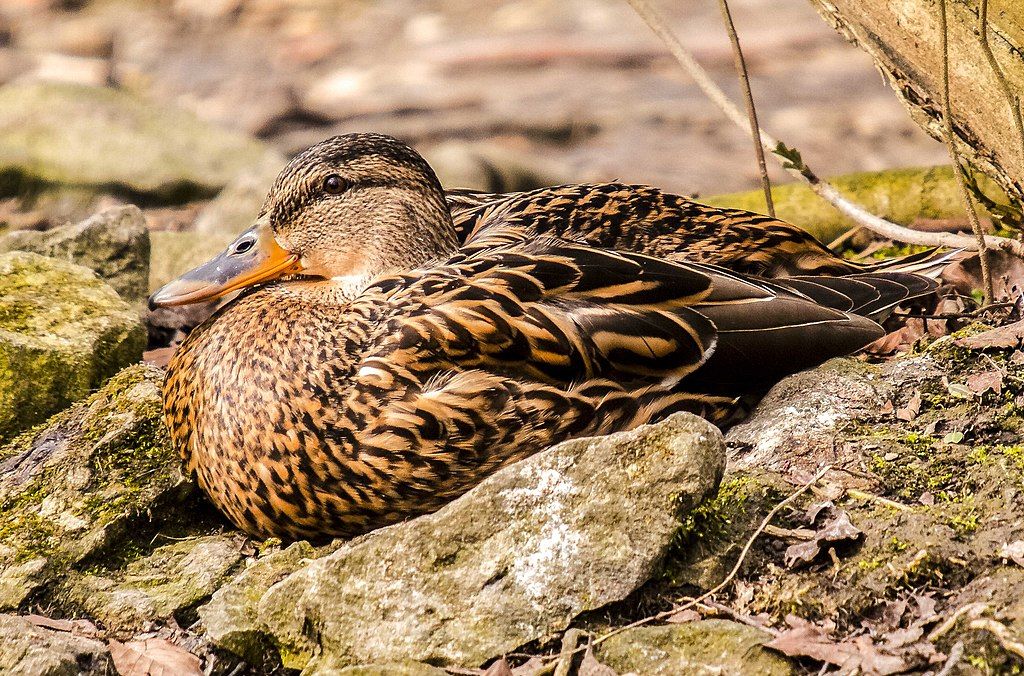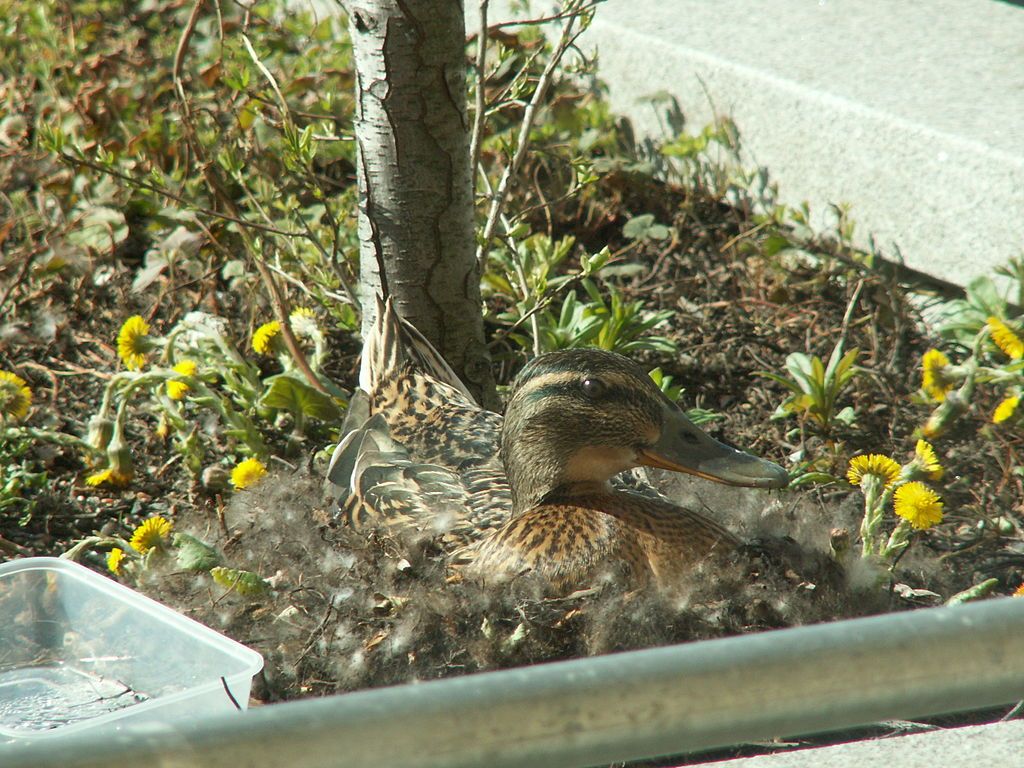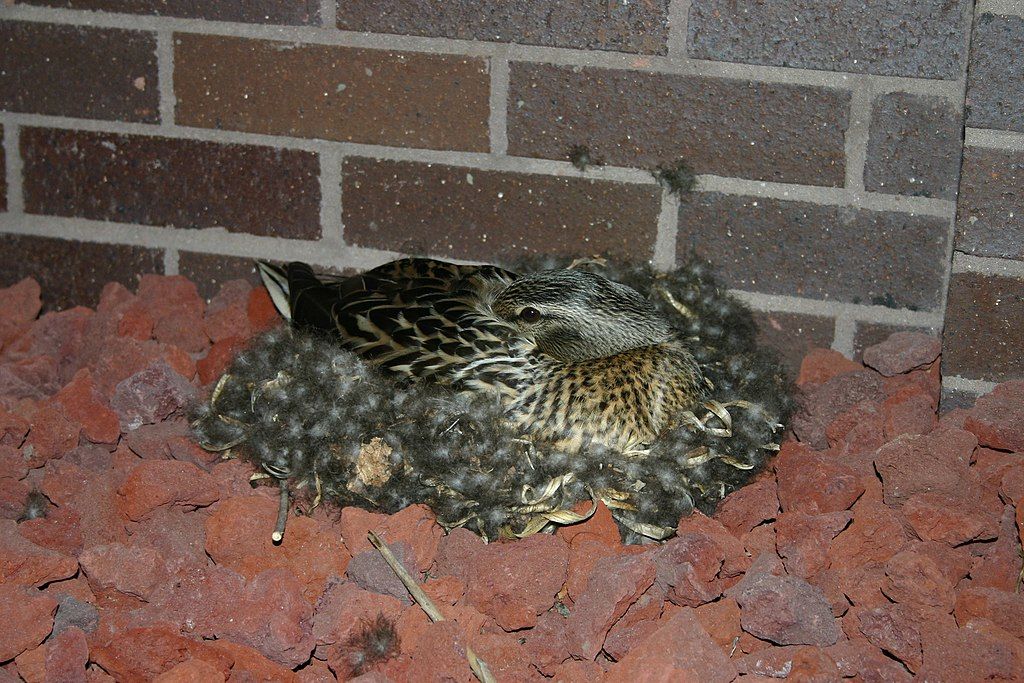
10 April 2023
While songbird migration picks up in April, lady mallards are preparing to nest.
Everything about the nest is done by the female. She picks the site, she makes the nest, she lays the eggs, she incubates.

Here are some cool facts about mallard nesting (Anas platyrhynchos), gleaned from Birds of the World.
- Mallards pair up in autumn so they get down to the business of nest site selection as soon as they’ve chosen their breeding home range. The search begins “generally 5-10 days after first Persistent Quacking by hen.” Have you ever noticed first Persistent Quacking? I have not.
- The pair searches together by “making low circling flights over the area, usually in the evening.” They land together at likely spots, she walks into cover, he waits outside. Watch for this in the evening at Duck Hollow, Wingfield Pines, North Park, etc.
- “Experimental evidence suggests that mallards and several other dabbling ducks may be able to assess predation risk by detecting predators’ urine.” They can smell the snakes and raccoons!
- Mallards usually nest on the ground “in upland area near water under overhanging cover or in dense vegetation for maximum concealment.”
- Urban mallards get creative. They nest in planters, woodpiles, docks, boats, artificial structures and sometimes on buildings.
- Mallard hens do not carry nesting material to the site. Instead they make a bowl and pull at nearby vegetation to line the bowl with plant litter, leaves, etc. They pull tall vegetation to drape over the nest and increase cover.
- The first egg is laid 1-4 days after nest site selection. She lays one egg a day usually in the morning. Clutches consist of 1-13 eggs. The larger clutch sizes probably include eggs dumped by other female mallards!
- She waits to begin incubation until the clutch is complete.
- During incubation she plucks down from her breast to line the nest and cover the eggs.
- Recess! “The female usually leaves the nest once in early morning, returning before 9:00 and once in late afternoon, leaving after 16:00. Recess lasts 15–60 minutes.”
- If something eats her eggs, a wild mallard won’t renest but an urban mallard will. Some urban mallards raise second broods in unnaturally crowded populations.
- Her chicks hatch in about 28 days.

In about 28 days I’ll tell you what happens next.
(photos from Wikimedia Commons; click on the caption to see the original)
Here in N.E. Ohio we have had a pair of Mallards visit our covered swimming pool every Spring for the past 8 years. The pool has a black cover so maybe it looks more like a natural pond. They stay for about 10 days then decide it’s not the right area for them. Last year she laid an egg in the crumpled area of the pool cover. We love seeing them and glad they are comfortable enough to consider hanging around.
My husband and I just got gas at the Pilot truck stop at the intersection of I79 and Rt. 422. We spotted an Eagle nest and 2 adult eagles on top of the highest lite pole at the truck stop. Wish we had binoculars to see if we could see any fuzzy heads. Plenty of junk food available!!